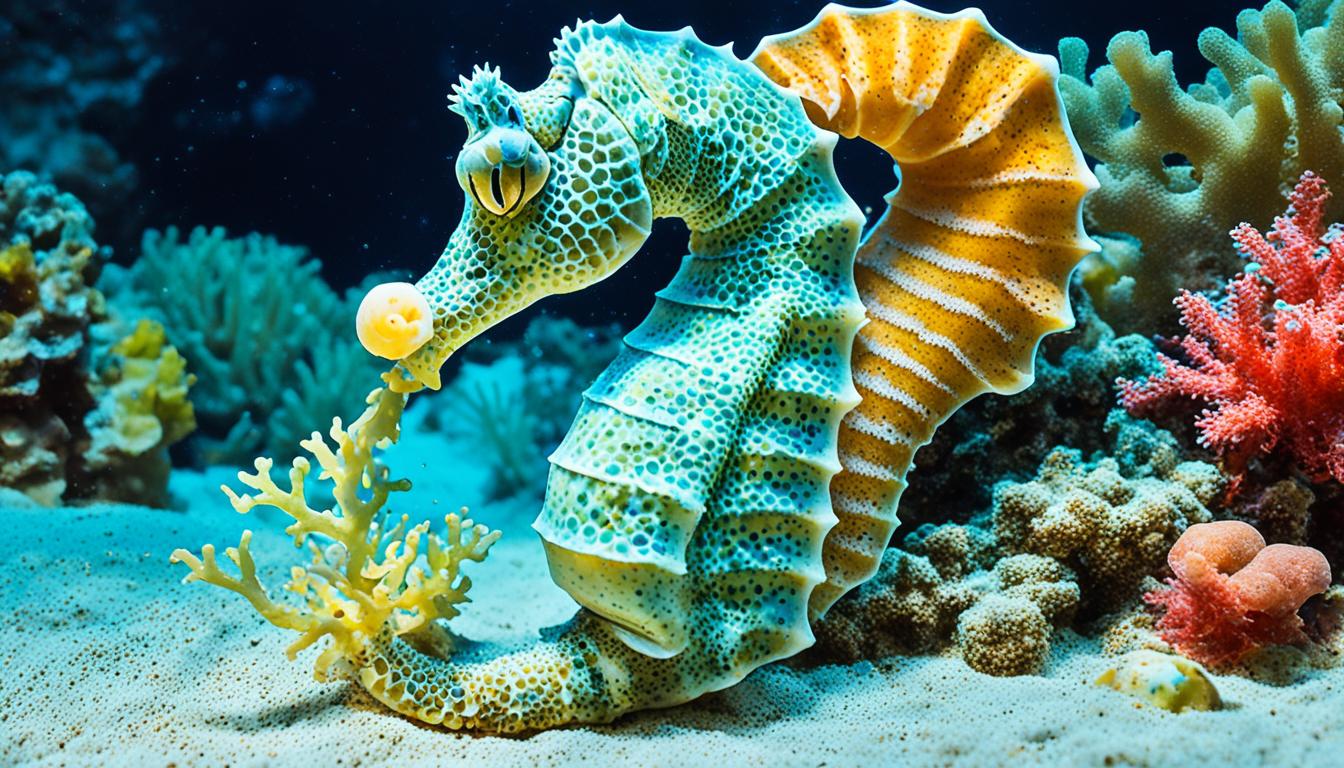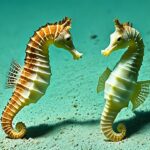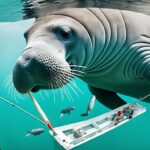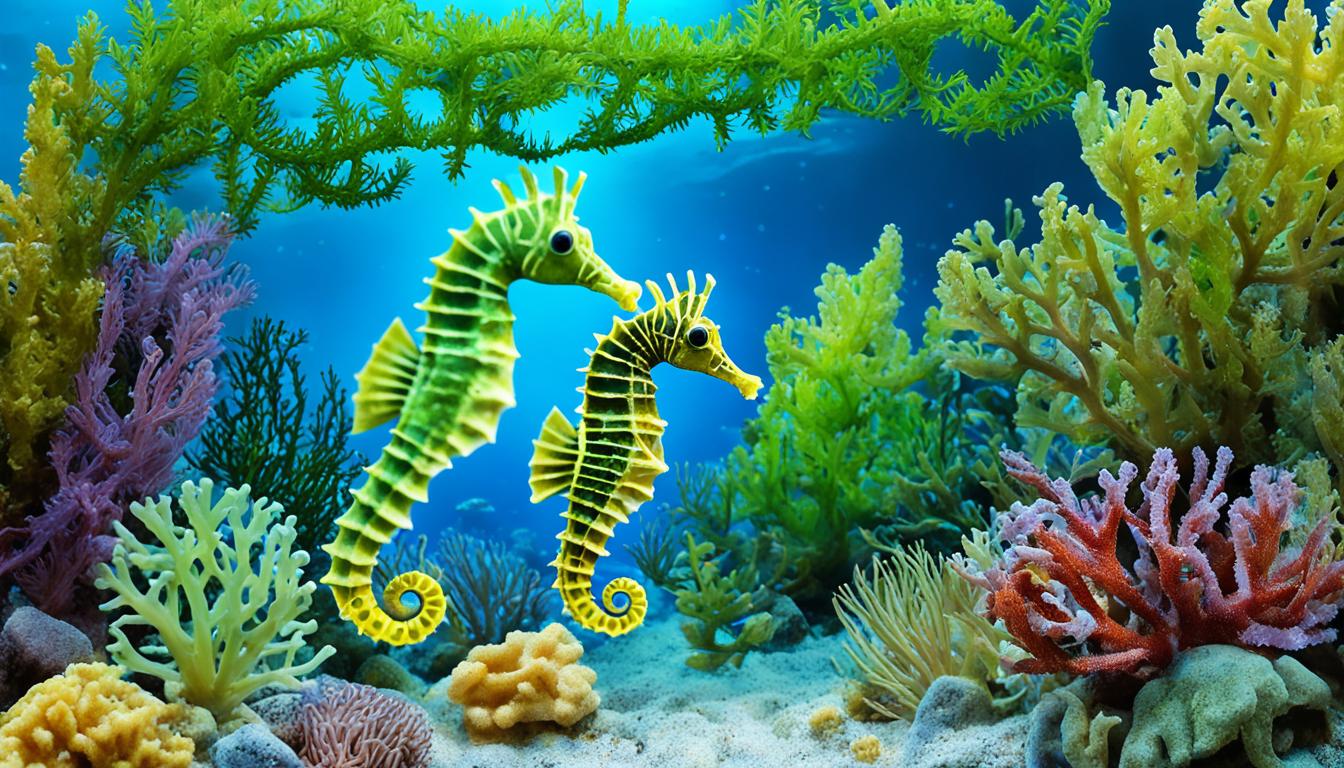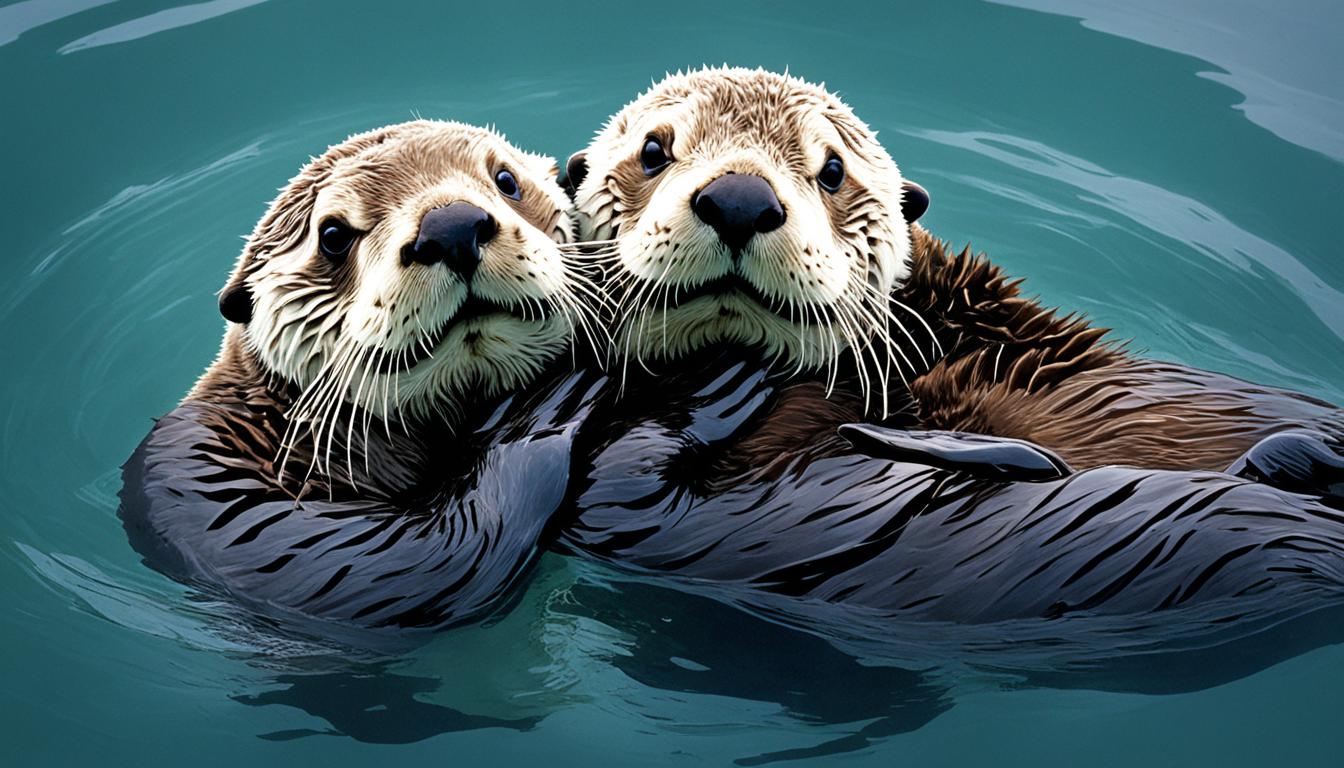When we think about how animals reproduce, the female is usually the star. But with seahorses, it’s the male who takes on a special role. They carry and care for the eggs, which is quite unique. You might be curious, why do male seahorses do this?
This behavior sets them apart in the animal world and helps them reproduce better. They use a special pouch called the brood pouch to carry the eggs. Inside, the eggs get the nutrients and protection they need until they hatch. The number of babies, called fry, can be from 100 to 2,000, depending on the type of seahorse.
The Unique Role of Male Seahorses in Reproduction
Male seahorses have special traits that make them stand out, especially in seahorse reproduction. They carry the fertilized eggs in a pouch called a brood pouch. This pouch acts like a womb, keeping the embryos safe as they grow.
The male seahorse anatomy includes this special pouch. It helps control the temperature and salt levels, making it perfect for the babies to grow. This lets the female focus on making more eggs, which means more babies for the pair.
When male seahorse pregnancy happens, the males change in ways that help the babies grow. They give oxygen and food to the embryos, getting them ready for life outside. This shows how male and female seahorses work together in a unique way, making their reproduction process fascinating.
Why do male seahorses carry the eggs?
Seahorses have a unique way of reproducing that shows how amazing their biology is. Male seahorses have a special role in making babies. They carry the eggs in a brood pouch, which helps the eggs grow after they are fertilized. This pouch is a key part of their body design.
Understanding the Seahorse Brood Pouch
The brood pouch of a male seahorse is crucial for their reproduction. It works like a placenta, giving the embryos a safe place to grow. It also helps in giving the eggs the nutrients they need to grow.
This special pouch helps the baby seahorses survive by giving them what they need early on.
The Process of Egg Transfer and Fertilization
When seahorses reproduce, the female lays her eggs in the male’s brood pouch. This starts a special process called seahorse egg fertilization. Inside the pouch, the male fertilizes the eggs, making sure they have everything they need to grow.
This whole process can take from 14 to 28 days. The male seahorse carries the fertilized eggs until they are ready to come out as live babies.
Male Seahorse Pregnancy: A Fascinating Process
Male seahorse pregnancy is a unique event in the animal world. Males carry the eggs, showing a special way of seahorse reproduction. After the female lays her eggs, the male uses a brood pouch for them to grow. This pouch protects the eggs until they turn into tiny seahorses, called fry.
The way they give birth is also fascinating. Male seahorses use their muscles to push out hundreds to thousands of fry at once. This method helps them ensure their species thrives through efficient reproduction.
After birth, males can quickly get ready for more eggs. This lets them keep reproducing all season, which is key for their population’s health. The effort males put into pregnancy helps their babies from the start, showing their strong seahorse parental care.
Seahorse Mating Behavior and Pair Bonding
Seahorse mating behavior is quite interesting. It shows how important their courtship rituals are for their reproduction. These rituals help form strong bonds between male and female seahorses. They are key for successful seahorse reproduction.
The Courtship Rituals of Seahorses
During courtship, seahorses move together and change colors. The male does special moves to attract the female. These actions are crucial for building a strong relationship. This bond is important for the male to carry the eggs.
This complex behavior shows how important these rituals are for a successful pair. The male’s readiness to carry eggs depends on their bond. The detailed courtship process shows the commitment needed for seahorse reproduction.
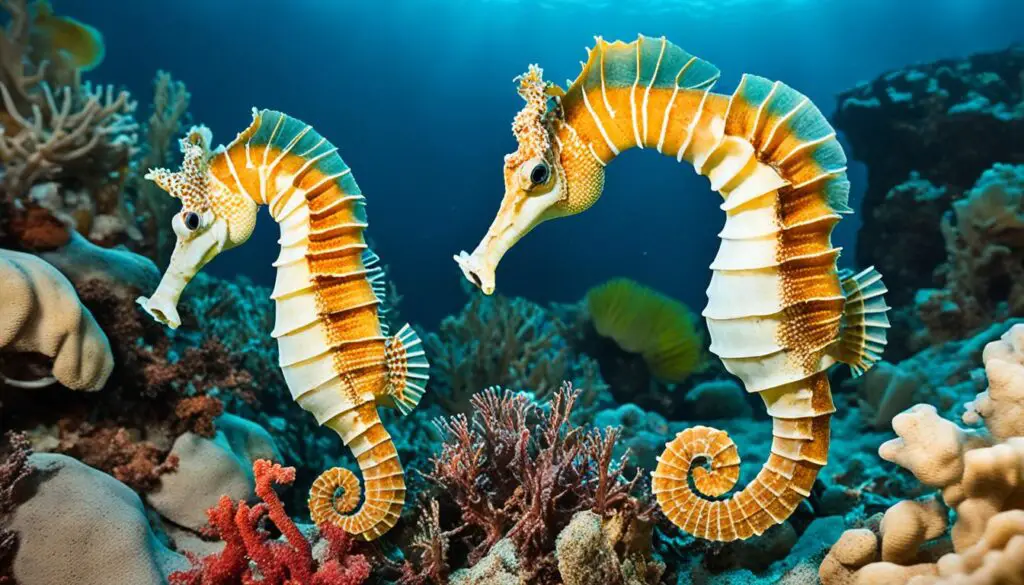
Seahorse Parental Care: The Role of Male Seahorses
In the world of seahorse reproduction, male seahorses show amazing parental care. They carry eggs in a special brood pouch. This pouch protects and feeds the developing babies. This unique way helps the babies survive and use energy more efficiently.
Inside the pouch, the babies grow safely away from danger. This careful approach to seahorse parental care helps more babies survive than if they were left alone. After they hatch, the babies don’t need the male’s help anymore. They quickly learn to live on their own in the water.
Seahorses balance their parental care to help their species survive without using too many resources. The role of male seahorses in caring for their babies shows how important it is for marine life to adapt. This helps their kind keep going.
| Aspect | Male Seahorse Role | Comparison with Other Species |
|---|---|---|
| Gestation | Carriers fertilized eggs in pouch | Females often abandon eggs after laying |
| Protection | Provides a safe environment from predators | Other species may rely on hiding places |
| Nourishment | Supplies nutrients to developing embryos | Usually absent in species that don’t care for eggs |
| Post-Birth Care | No care provided; fry become independent | Some species offer continued care for young |
Exploring Different Seahorse Species and Their Habitats
Seahorses belong to the family Syngnathidae and include many unique species found in oceans around the world. Each seahorse has adapted to its home in special ways. This affects how they mate, carry eggs, and their chances of survival. They live in places like the colorful reefs of the Caribbean, the vast waters of Australia, and the coasts of Southeast Asia.
But, their special homes also make them at risk. Seahorses face threats like damage to their homes from coastal development, being caught in fishing nets, and being sold for aquariums or traditional medicine. It’s important to know about these dangers to help protect them.
Knowing where seahorses live is key to saving them and the oceans they call home. By supporting conservation, you help protect seahorses and the ecosystems they live in. Every action helps ensure these amazing sea creatures can continue to exist for years to come.

